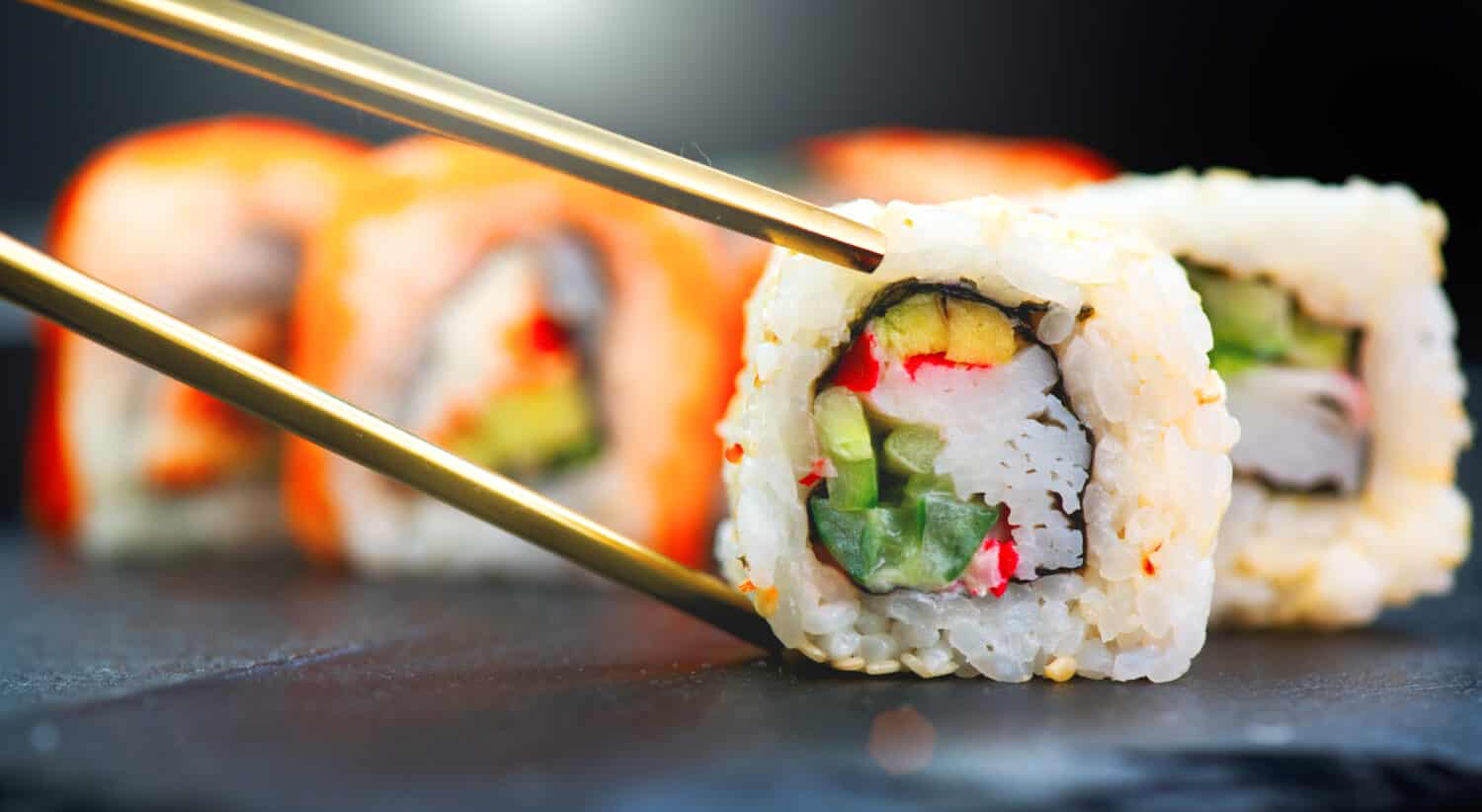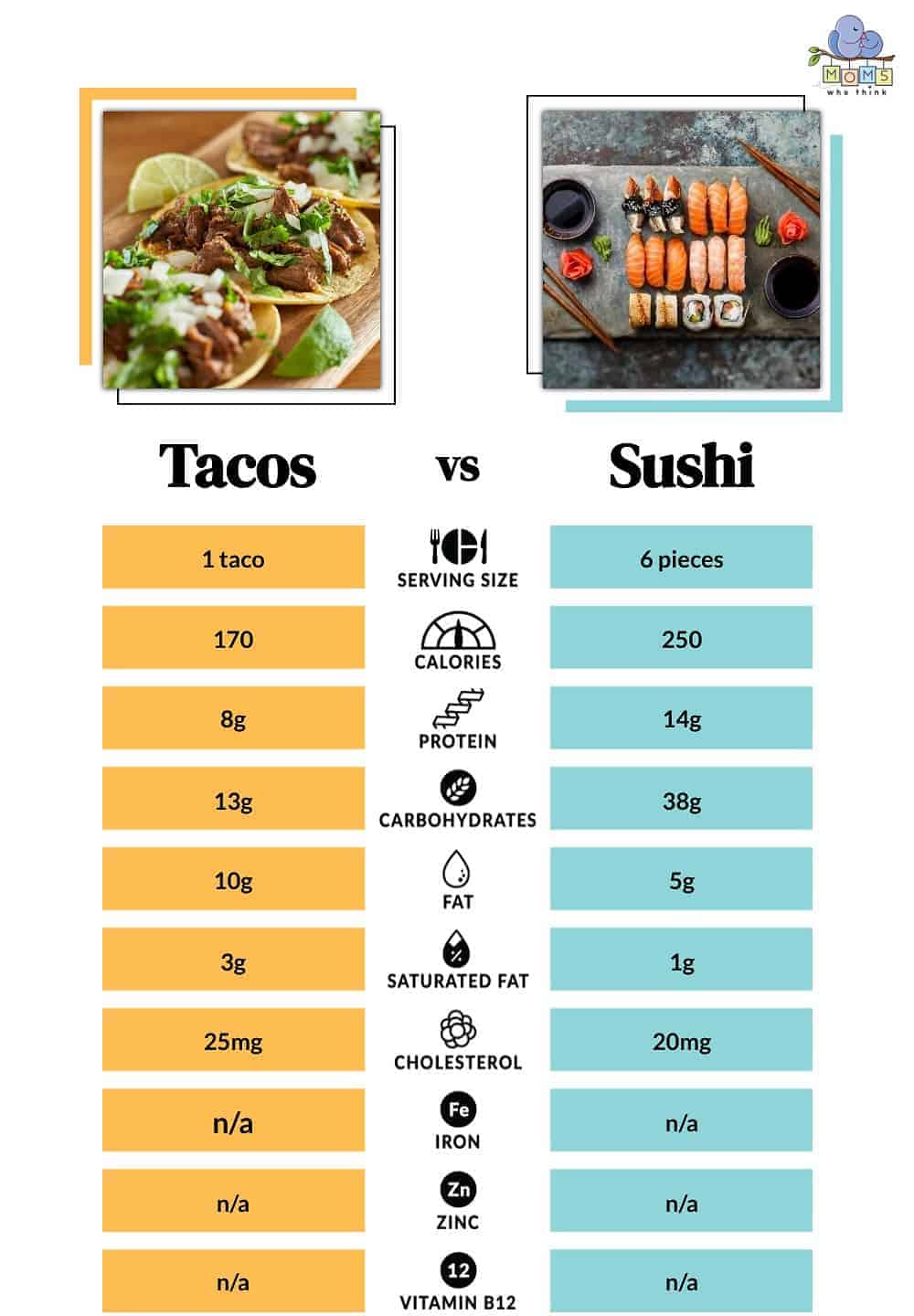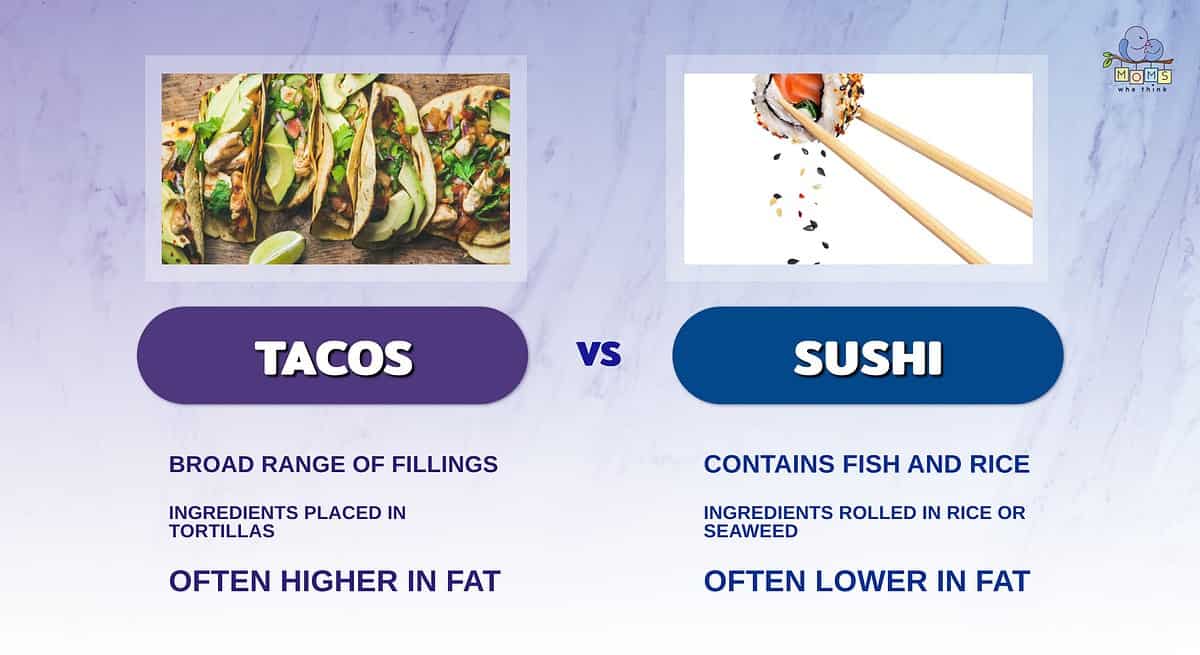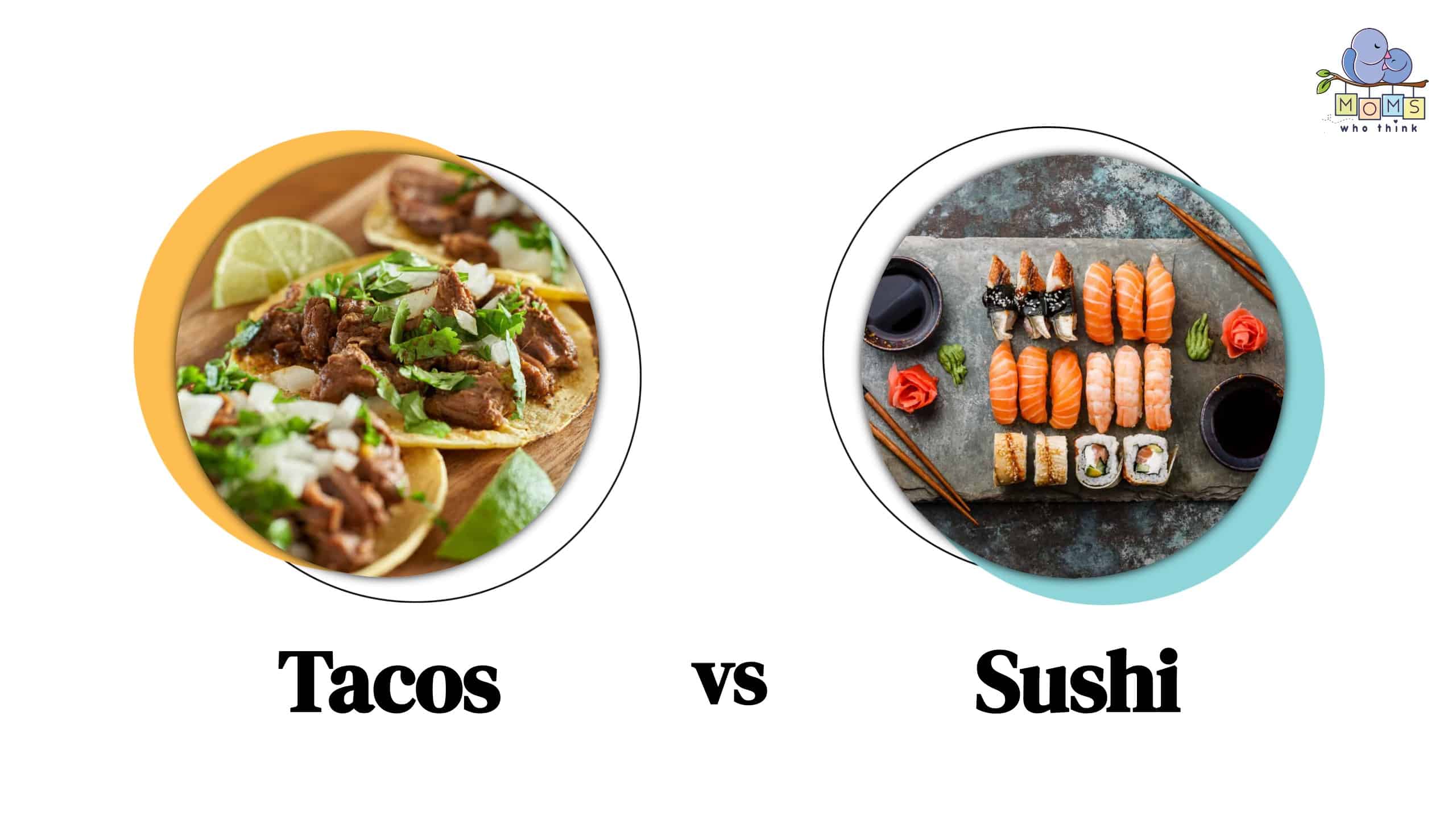We're about to dive into the delicious realms of sushi and tacos—two beloved cuisines that have captured the hearts and taste buds of food enthusiasts around the globe, but especially American diners. In this post, we'll explore the differences between these two iconic dishes, discuss their nutritional disparities, compare their surprising similarities and (more apparent) differences, and offer some exciting substitution options for both sushi and tacos.
Are Sushi and Tacos the Same Thing?
In a word… no. These two dishes are about as different as it gets. They hail from different parts of the world, call for specific ingredient requirements, and come with their own culinary cultures.
Although sushi and tacos share certain similarities — both being handheld, endlessly customizable, and overflowing with flavors — they are distinct culinary creations. Here's an overview of why they're not the same thing.
- The must-have convenient reference guide for every home cook!
- Includes more than 8,000 substitutions for ingredients, cookware, and techniques.
- Save time and money on by avoiding trips to grab that "missing" ingredient you don't really need.
Traditional Ingredients
Sushi predominantly features seafood, raw or cooked, combined with rice and vegetables. It's not uncommon for variations of seaweed to be used in the dishes, and the preparation of the ingredients is just as sacred and honored as the consumption. Tacos, on the other hand, have a broader range of fillings, including meat, beans, cheese, and various vegetables. They have a distinctly Latin American flavor profile and often feature fresh herbs, tomatoes, aromatics, and chile peppers — and they do not shy away from heat and spice.

Sushi has deep culinary roots that trace all the way back to Japan across the centuries.
©Subbotina Anna/Shutterstock.com
Preparation Techniques
The preparation techniques for sushi and tacos are about as polar opposite as you can get. You can make sushi at home by rolling ingredients in seaweed (specifically nori) or wrapping them in rice and served in bite-sized pieces. While the you cook the rice, often the seafood elements are raw. And sushi is very often served with condiments that enhance the ingredients in the roll, like soy sauce, rice wine vinegar, ponzu, or sesame oils. Tacos, however, involve filling a tortilla with various ingredients — again, often of a Latin American root — and you can serve them with soft or hard shells. They, too, come with condiments, including salsas and hot sauces and other relishes prepared in a traditional Mexican molcajete.
Geographical and Cultural Significance
There are certainly some noticeable differences in both the dishes' geographic origins and cultural significance. Sushi, for example, is a Japanese dish that remains a global favorite even through centuries. Gourmands with educated palates even consider it one of the finest delicacies in many parts of the world. Tacos, on the other hand, have their roots in Mexico and are a staple of Mexican cuisine.
In terms of culture, sushi and tacos also have distinct differences. Sushi is often seen as a more formal or upscale food, with many traditional rules and customs surrounding its preparation and consumption. Tacos, on the other hand, are often associated with more casual or street-style dining experiences. In the United States, they're heavily associated with the food truck culture. Even though tacos have made their way into haute cuisine, most purveyors stay close to the humble (but delicious) roots of this iconic street food.
Nutritional Differences
When it comes to nutritional profiles, sushi and tacos display some distinctions that are fairly obvious even to the rookie gourmand. Here, I take you deeper into what makes each dish nutritionally unique and explore ways you can optimize their specific nutrient densities.

Sushi: A Nutrient-Packed Powerhouse
Sushi is often lauded for its health benefits. It typically features fresh fish or another type of seafood, vegetables (including sea vegetables and seaweed), and rice, all rolled up into delectable bite-sized pieces. Here are a few important nutritional considerations to remember as you enjoy your favorite sushi roll:
- Omega-3 Fatty Acids: Fish such as salmon, tuna, and mackerel used in sushi are excellent sources of omega-3 fatty acids, which promote heart health and provide anti-inflammatory benefits.
- Low in Fat: Sushi's reliance on lean proteins and vegetables makes it a relatively low-fat option, which can be beneficial for weight management. It's common to add ingredients that contain fats — like avocado — but by and large, they're monounsaturated fats that make sushi incredibly healthy.
- Rice and Vinegar: The sushi rice, combined with vinegar, adds a tangy taste and makes the dish incredibly energy-dense, thanks to the grain's carbohydrates. If you want to push the health benefits of the rice even further (and cultural authenticity is not a concern for you), you can swap in brown rice, which is a complex carbohydrate that boasts more dietary fiber.
Tacos: A Fiery Fusion of Flavors
While tacos are most well-known for their wide range of flavors and textures, their nutritional variables are just as notable. The base formula for a taco includes a corn or flour tortilla filled with ingredients like meat, beans, cheese, vegetables, and salsa. Breaking it down further, tacos bring the following nutritional elements to the table.
- Protein Power: Depending on the fillings you choose, tacos can be a great source of protein. Options like grilled chicken, beef, or tofu provide essential amino acids necessary for muscle growth and repair.
- Fiber-Rich Options: Tacos are packed with hidden fiber, thanks to ingredients like black beans, pinto beans, and grilled vegetables. Fiber aids in digestion and promotes a feeling of fullness.
- Healthy Fats: Avocado slices or guacamole used in tacos provide monounsaturated fats, which are heart-healthy and contribute to hormone health and restoration and support of good gut bacteria in the microbiome.
Can Sushi and Tacos Be Substituted for Each Other?
Listen, we know some crazy things can happen in the world of food. But turning tacos into sushi or sushi into tacos is a real stretch, even by our creative and fast-and-loose standards. That said, there are similar elements to the dishes if you paint with broad strokes. Additionally, thanks to the concept of Fushion Cuisine, crossovers between the two distinct foods are as interesting as they are delicious.
Substituting Sushi for Tacos
Sushi lovers craving a taco fix can try creating sushi rolls inspired by taco flavors. Experiment with fillings like grilled chicken, avocado, lettuce, and salsa, and roll them up in nori or rice for a fusion delight. If you want to get really creative, reach for the polenta and see where it can take you. Don't forget to give your Taco Sushi the full treatment by adding a Latin-flavored sauce or topping with a pico de gallo or corn salsa.
Substituting Tacos for Sushi
Taco enthusiasts longing for a taste of sushi can try crafting sushi-inspired tacos. Use sushi-grade fish or cooked shrimp as a filling. Then add fresh veggies, and wrap them in tortillas or rice paper for a unique twist. Don't skimp on the rice, and don't forget the condiments that tease out the nuance of traditional Japanese flavors.
- The must-have convenient reference guide for every home cook!
- Includes more than 8,000 substitutions for ingredients, cookware, and techniques.
- Save time and money on by avoiding trips to grab that "missing" ingredient you don't really need.

Tacos are incredibly versatile when it comes to how adaptable they are with flavors and textures.
©Joshua Resnick/Shutterstock.com
Other Substitution Options for Sushi and Tacos
If you're looking to shake things up in your culinary adventures, here are some exciting substitution options for both sushi and tacos:
Sushi Substitutions
- Sashimi Platter: Opt for a sashimi platter, which serves fresh slices of raw fish without the rice.
- Poke Bowl: Dive into a vibrant poke bowl with marinated fish, rice, and an array of toppings.
- Temaki Hand Rolls: Enjoy the convenience of hand rolls with a variety of fillings, wrapped in a cone-shaped nori.
Taco Substitutions
- Burritos: Satisfy your cravings with a hearty burrito filled with your favorite taco ingredients, but with a larger tortilla wrap.
- Quesadillas: Enjoy a cheesy delight with grilled tortillas folded over a mix of ingredients and served with salsa and guacamole.
- Tostadas: Crispy tortillas topped with refried beans, meat, lettuce, and cheese make for a delicious taco alternative.
Best Sushi Recipes
- Hand-Roll vs. Cut Roll: How Are They Different?
- Nigiri vs. Sashimi: Four Key Differences
- Sushi Rolls You Can Make at Home (Delish)
Best Taco Recipes
Print
Stir-fried Tacos
- Yield: 8 servings
Ingredients
1 pound lean ground beef (90% lean)
1/4 cup chopped onion
1 can (14 1/2 ounces) stewed tomatoes
1 cup frozen corn
2 Tablespoons chili powder
1 teaspoon sugar
1/2 teaspoon dried oregano
1/2 teaspoon salt
1/8 teaspoon pepper
1 cup (4 ounces) shredded reduced fat cheddar cheese
1 medium head iceberg lettuce, shredded
Tortilla chips
1 cup salsa
Instructions
1. In a nonstick frying pan, cook beef and onion over medium heat until meat is no longer pink. Drain.
2. Drain the juice from the stewed tomatoes into the beef mixture, then dice the tomatoes. Stir in the tomatoes, corn, chili powder, sugar, oregano, salt, and pepper.
3. Bring to a boil. Reduce heat; cover and simmer for 10 minutes, stirring occasionally.
4. Sprinkle the shredded cheese evenly over the mixture.
5. Place shredded lettuce and a single layer of tortilla chips on each plate; top with taco mixture and 2 Tablespoons salsa.
Nutrition
- Serving Size: ¾ cup
- Calories: 416
- Sodium: 641mg
- Fat: 18g
- Saturated Fat: 5g
- Carbohydrates: 44g
- Fiber: 5g
- Protein: 20g
- Cholesterol: 38mg
Conclusion

- Tacos can have a broad range of fillings, from meat to seafood to beans. Sushi is traditionally made with seafood and rice; occasionally, vegetables may be included.
- With tacos, the ingredients are put into tortillas. With sushi, the ingredients are rolled or wrapped in rice or seaweed.
- Tacos tend to be higher in fat than sushi. In addition, tacos often have a lot of fiber. Sushi is filled with omega-3 fatty acids and protein.
We know we just racked up the miles traversing the culinary globe, and we hope you've enjoyed exploring the world of sushi and tacos. While sushi offers a nutrient-packed delight with its focus on fresh fish and rice, tacos delight with their fusion of flavors and varied fillings. Remember, while they may not be the same thing, they both bring unique culinary experiences to the table. Whether you're rolling up sushi or savoring a taco, embrace the diversity and indulge in the flavors that make each dish special.
- The must-have convenient reference guide for every home cook!
- Includes more than 8,000 substitutions for ingredients, cookware, and techniques.
- Save time and money on by avoiding trips to grab that "missing" ingredient you don't really need.


